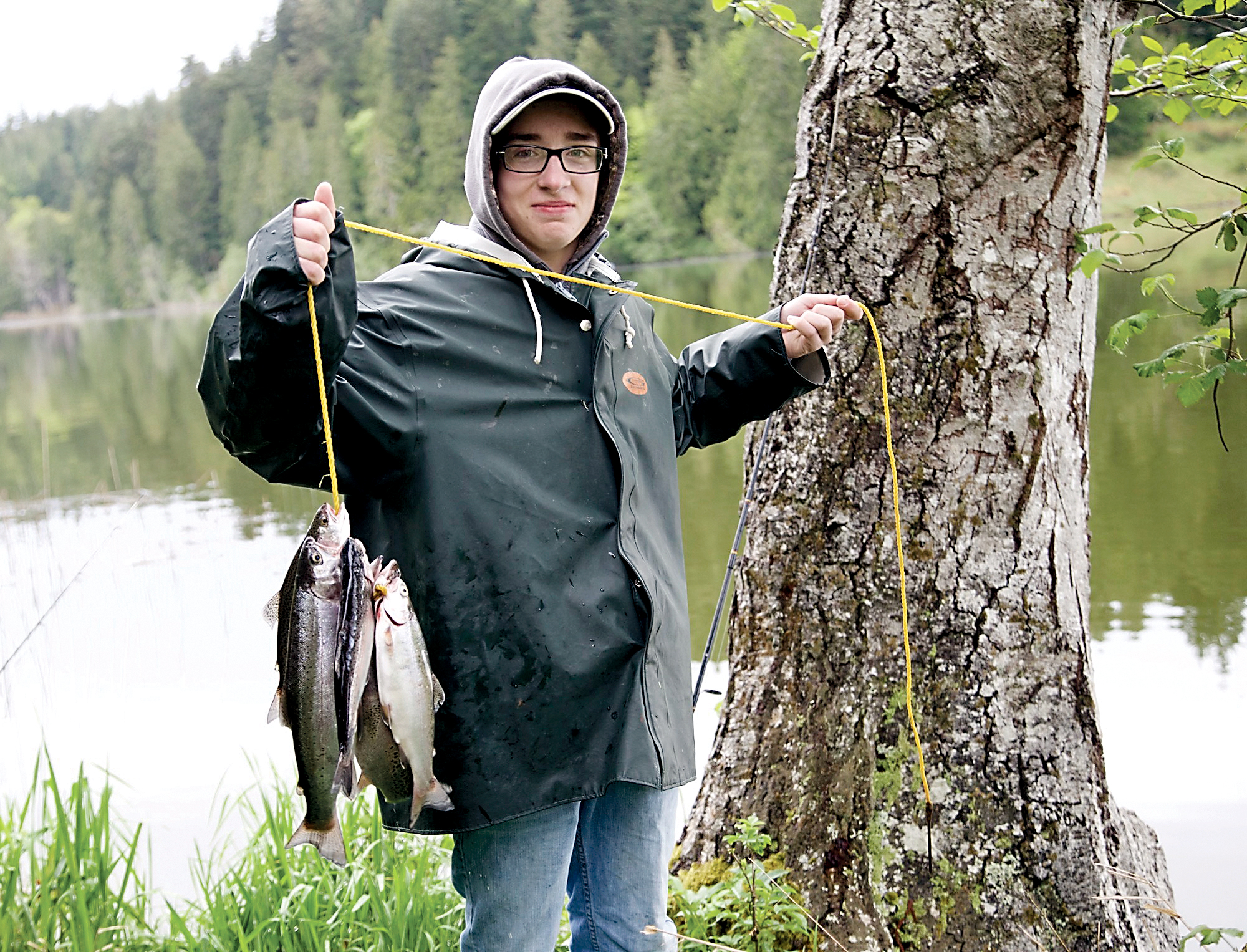PORT TOWNSEND — Anderson Lake, which was closed for all but two weeks of the fishing season last year, opened Saturday for the start of the season with about 100 people arriving early to catch trout.
“I heard that a lot caught their limit,” said State Park Ranger Aaron Terada, operations manager for the Fort Flagler area, which includes Anderson Lake between Port Townsend and Chimacum.
“Bait fishing was better than lure fishing because the water was a little murky,” he said.
Anderson Lake was not stocked with fish this year. Gibbs, Horseshoe, Ludlow Lake, Sandy Shore, Teal and Silent lakes were stocked with trout.
The lake in the 410-acre Anderson Lake State Park has been plagued with intermittently high levels of dangerous toxins from blue-green algae since two dogs died after drinking the water on Memorial Day weekend in 2006.
Testing for toxins began in 2007, and the levels — and subsequent closures and reopenings — have yo-yoed each season.
In 2008, the lake had the dubious distinction of containing the highest level of anatoxin-a, a potentially lethal nerve toxin, ever recorded in the world: 172,640 micrograms per liter.
Last season, the lake was open to the public only for two weeks after the beginning of the lowland lakes fishing season, which is always on the last Saturday of April.
So far this year, it looks good, said Michael Dawson, lead environmental health specialist for the Jefferson County Water Quality Program.
The county agency tests lakes for toxin levels. If toxins are above recommended levels for safety, it will close county lakes. Since Anderson is a state lake, decisions for closures are made by state park rangers.
The county has been testing for toxins in Anderson Lake weekly since April 6, and all test results have shown they are well below allowable levels.
The latest test, which was last week, found a barely detectable trace of anatoxin-a. The amount — 0.058 micrograms per liter of water — was well below the state recreational guideline of 1 microgram per liter.
Microcystin, a toxin that can lead to liver damage if consumed over a long period of time, was not found at all.
However, a yellow caution sign marks the edge of the lake because of an algae bloom in the water.
“I would urge people to be on the lookout for a surface scum that’s bright-green and avoid those areas,” Dawson said.
“Sometimes the toxins can be concentrated in those areas.”
Those who use the lake are counseled not to drink or swim in the water, keep pets and livestock away, and clean fish well, discarding the guts.
The county will test the lake this week and report findings by Friday at http://tinyurl.com/PDN-JeffCoLakes.
The county has not sampled Gibbs Lake, a catch-and-release trout lake near Chimacum, nor Lake Leland, near Quilcene, this year.
Both look clear, Dawson said. Although Gibbs has a light algae bloom, it’s not the harmful blue-green variety.
This year, the county agency is monitoring the lakes with reduced funds.
It lost state funding for freshwater algae control that typically brought in $15,000 to $20,000 annually, Dawson said.
The state does pay for the testing of samples, while the county funds personnel and the costs of shipping samples and getting the word out.
“We are looking for other options to be able to keep this going in the future,” Dawson said.
“We have a lot of concern about the lakes and a lot of desire to keep people informed.”
County personnel will test for toxins when a lake has a blue-green algae bloom.
“It’s not going to happen if there isn’t an obvious bloom,” he said.
Blue-green algae, which occurs naturally, can begin at times to produce toxins in a process researchers still don’t understand.
Toxins can be present only after an initial bloom, Dawson said; however, a bloom can die off and leave a poisoned lake.
“The bloom can start to look better, and the toxins can continue to get worse for a while,” Dawson said.
However, “the visual is the first clue.”
As to why Anderson Lake can become badly toxic, “we’re still evaluating last year’s results” from nutrient sampling, Dawson said.
The lake has a high level of nutrients such as phosphorus that fuel algae growth.
If the lake is closed later in the season, which ends Oct. 31, then the monitoring schedule will decrease, probably to monthly rather than weekly, Dawson said.
Teal, Leland and Gibbs lakes are open year-round.
Toxin-producing blue-green algae has not been spotted in Clallam County. Report algae blooms in Clallam County by phoning 360-417-2258.
________
Managing Editor/News Leah Leach can be reached at 360-417-3531 or at leah.leach@peninsuladailynews.com.
